IBM Infoprint 1412 & 1412N (4547-001, 4547-n01)

The IBM 4547 Infoprint 1412 printer offers up to 27 pages-per-minute (PPM)(1) monochrome printing for small businesses or workgroup printing needs for a large businesses. Best of all, the printer offers this capability at very affordable cost.
Note: (1) Exact print speed varies depending on document complexity, system configuration, software applications, driver, and printer status.
Model Abstract 4547-001
The IBM 4547 Infoprint 1412 Model 001 is a low voltage base printer.
Model Abstract 4547-N01
The IBM 4547 Infoprint 1412 Model N01 is a low voltage network printer.
>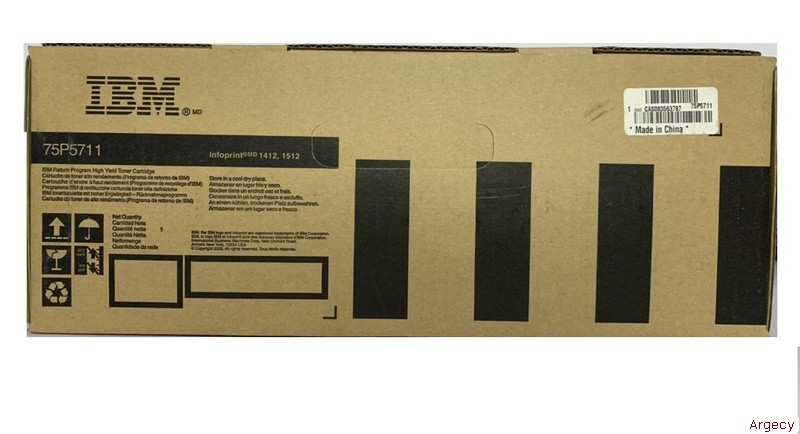 75p5711 Toner | |
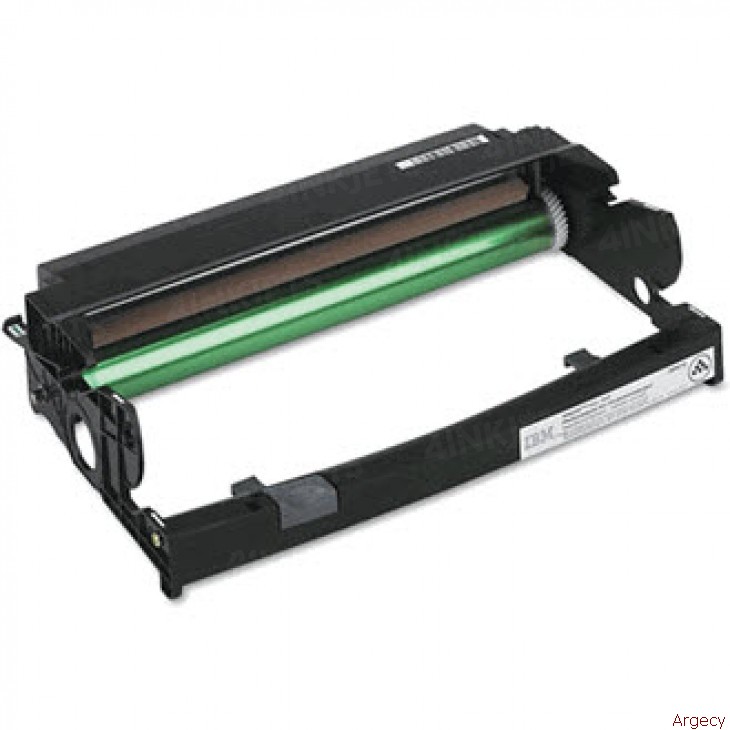 75p5712 Photoconductor Kit | |
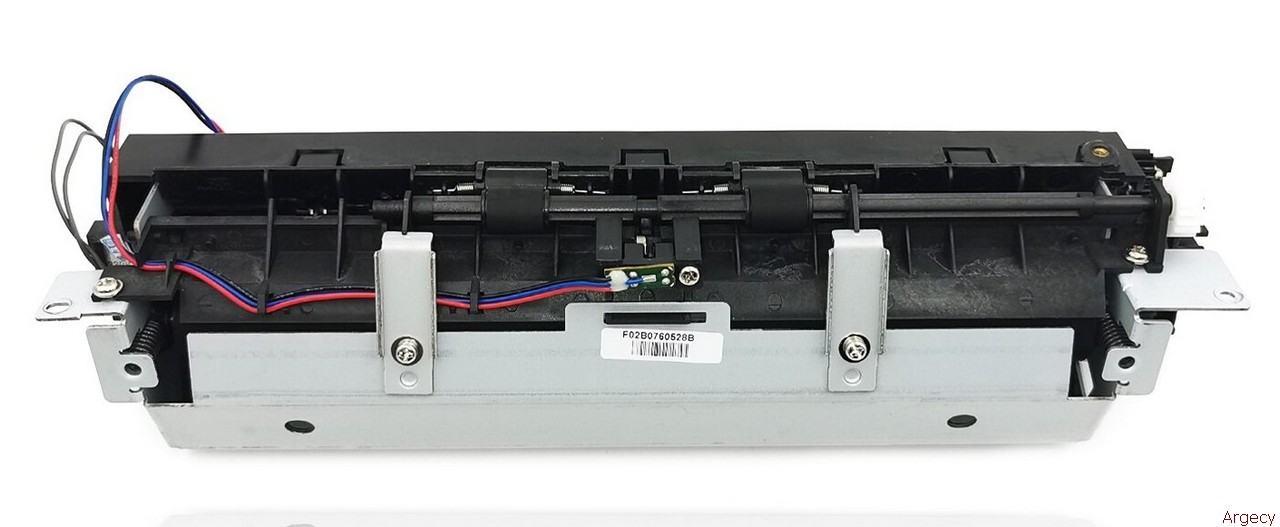 56p3309 Fuser | 56P3309 IBM Fuser assembly 110V 1412 E232/330/332 Fully refurbished with 90-day warranty 56P3309 I $165.00 |
| 75P6112 250-Sheet Tray | |
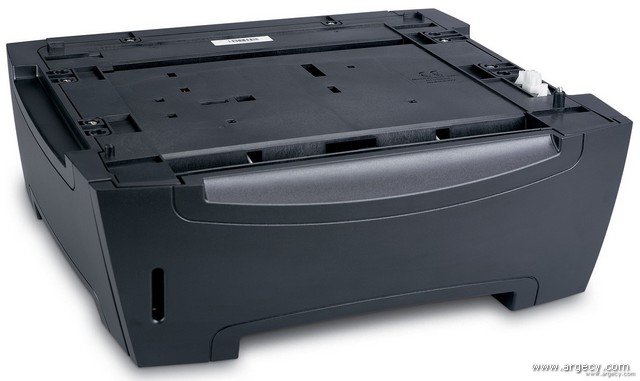 75p5819 550-Sheet Drawer with Tray | |
| 75P5820 550 Sheet tray | |
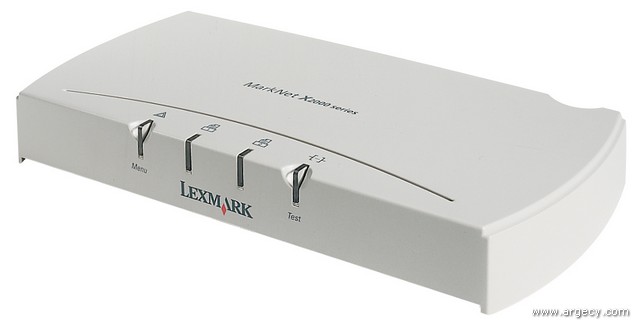 28P1836 Token-Ring-3 Port | |
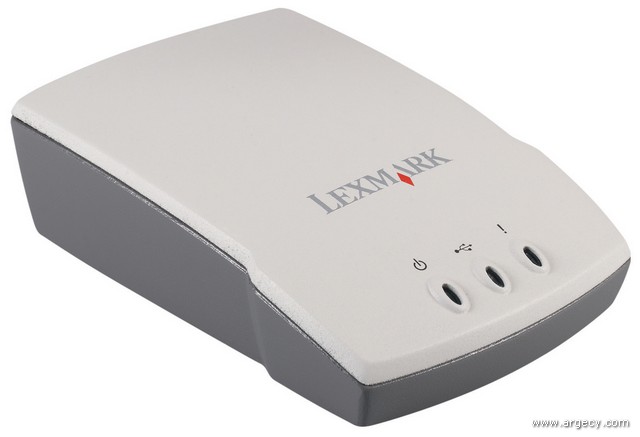 28P1839 Ethernet 10/100BaseTX-1 Port | |
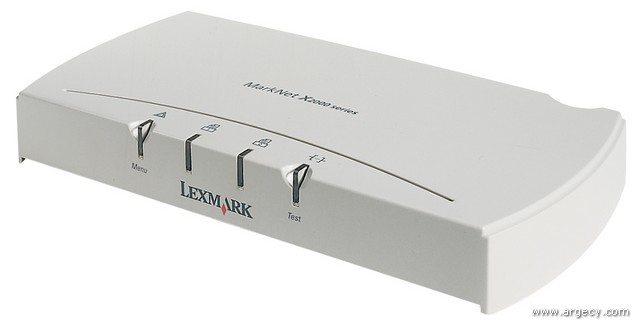 28P1840 Ethernet 10/100BaseTX-3 Port | |
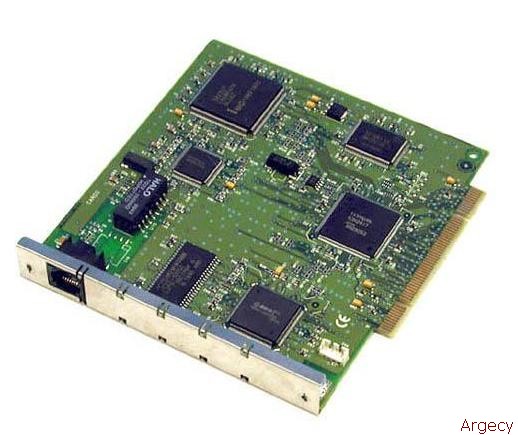 28P1841 Ethernet 10/100TX/10Base2 1 Pt | |
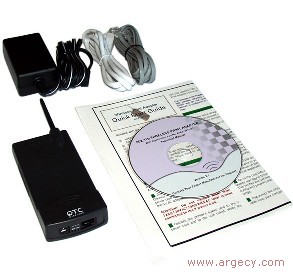 53P7854 Wireless Adapter 802.11b | |
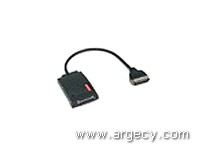 28P1845 External Serial Attachment | |
| 28P1862 Optra Forms Software | 28P1862 Optra Forms Software New 28P1862 (New) Retired, no longer available: Contact for alternatives |
| 28P1863 Optra Forms Director Software | 28P1863 Optra Forms Director Software New 28P1863 (New) Retired, no longer available: Contact for alternatives |
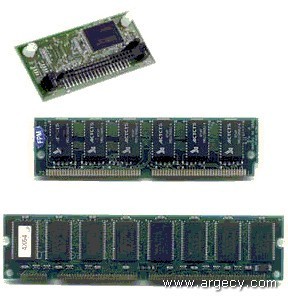 53P7602 IBM Brand 16 MB Memory DIMM | |
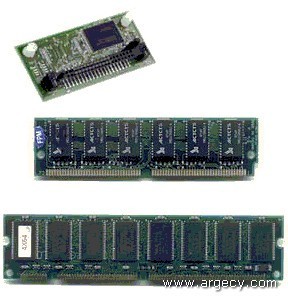 53P7603 IBM Brand 32MB Memory DIMM | |
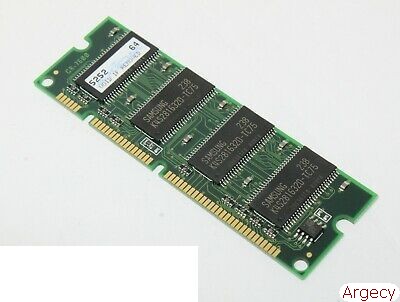 53P7604 64MB Memory DIMM | |
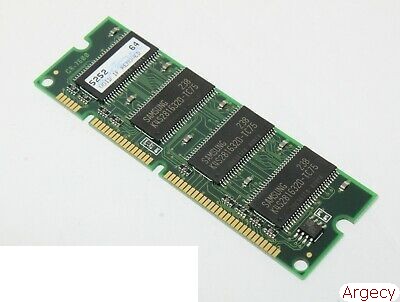 53P7605 IBM Brand 128MB Memory DIMM | |
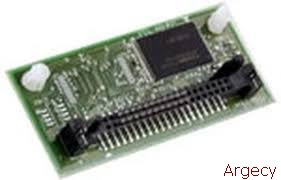 75p4690 16MB Flash | |
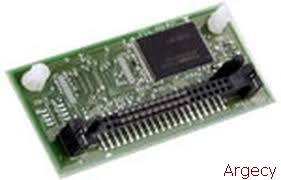 75p4691 32MB Flash | |
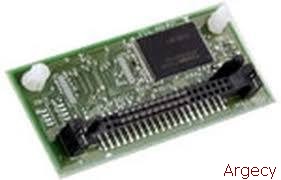 75P4694 16MB Optra Forms Flash | |
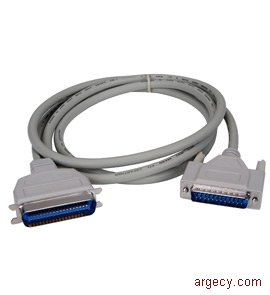 28P1871 10 ft. Parallel Cable 1284 | |
| 28P1874 50 ft. Serial Cable | |
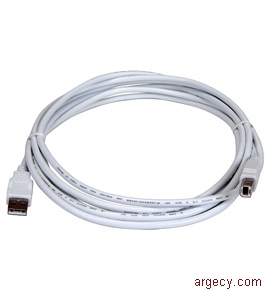 28P1875 IBM USB 2 Meter Cable |
Boost productivity and quality while you save money. Ideal for small businesses and small workgroups, the compact, monochrome laser Infoprint 1412 offers flexible networking options including wireless, broad media support and features generally found in higher priced printers.
| Maximum speed | ||
| 27 pages per minute (ppm) | ||
| First page out | As fast as 8.0 seconds | |
| b>Technology/processor | ||
| Monochrome laser/200MHz | ||
| Maximum monthly usage | ||
| 15,000 pages | ||
| Print Resolution | ||
| 300 dpi, 600 dpi, 1200 dpi, 1200 image quality, 2400 image quality | ||
| Models | ||
| Base, network (n) | ||
| Memory (std/max) | ||
| Base | 32/160MB | |
| n | 32/160MB | |
| Paper handling | ||
| Standard input capacity | Primary tray: up to 250 sheets Auxiliary tray: 1 sheet | |
| Optional input capacity | Optional drawer: 550 sheets 75p5819 | |
| Standard output capacity | Primary output: up to 150 sheets Secondary output: 1 sheet, straight paper path | |
| Standard datastreams | ||
| PostScript Level 3 emulation, PCL 6 emulation, PPDS | ||
| Printer attachments | ||
| Standard | USB port; Bidirectional parallel port (base); 10BaseT/100BaseTX Ethernet, USB, and Bidirectional parallel port (n) | |
| Optional external attachments | Token-Ring (28p1836), Ethernet (28p1839, 28p1840, 28p1841, 75p5449), Wireless Ethernet (802.11b) (53p7854), Serial (75p5449). | |
| Media | ||
| Sizes | Letter, legal, A4, A5, JIS B5, executive, folio, statement, universal and the following envelopes: 73/4, 9, 10, DL,C5 and B5 | |
| Types | Plain paper, bond, envelopes, card stock, paper labels and transparencies | |
| Weight | Plain paper: 16 lb to 43 lb (60 to 163 g/m2) Card stock: up to 90 lb. index | |
| Supported environments | ||
| Microsoft Windows XP, 2000, Me, 98, 95, NT 4; UNIX, Linux, Mac OS and Novell | ||
| Physical characteristics | ||
| Width | 15.6" (396 mm) | |
| Depth | 13.9" (353 mm) | |
| Height | 9.8" (249 mm) | |
| Weight | 22 lbs (9.98 kg) | |
| Environmental characteristics | ||
| 52 dBA (printing); 30 dBA (idle) | ||
| b>Consumable yield | ||
| Starter Toner Cartridge 2,500 pages (n), 1,500 pages (base); Toner Cartridge (std/high) 2,500/6,000 pages; Photoconductor Kit 30,000 pages | ||
| Cost-saving and environmental features | ||
| 10 levels of toner darkness settings offer up to 50% toner savings; IBM Return Program cartridges available | ||
The IBM 4547 Infoprint 1412 printer offers up to 27 pages-per-minute (PPM)(1) monochrome printing for small businesses or workgroup printing needs for a large businesses. Best of all, the printer offers this capability at very affordable cost.
Note: (1) Exact print speed varies depending on document complexity, system configuration, software applications, driver, and printer status.
Model Abstract 4547-001
The IBM 4547 Infoprint 1412 Model 001 is a low voltage base printer.
Model Abstract 4547-N01
The IBM 4547 Infoprint 1412 Model N01 is a low voltage network printer.
IBM Infoprint 1412 is the ideal printer for small businesses and small workgroups that require a versatile and affordable monochrome laser printer. This latest addition to IBM's workgroup printer line replaces the Infoprint 1312 printer and offers:
- Printing up to 27 PPM(1)
- Comes with 32 MB of memory standard and 160 MB of memory maximum
- Offers 2400 Image Quality and 1200 x 1200 dpi printing (at up to half speed)
- Offers Token-Ring, Ethernet and wireless connectivity options
Note: (1) Exact print speed varies depending on document complexity, system configuration, software applications, driver, and printer status.
The Infoprint 1412 replaces the popular Infoprint 1312. It provides:
- High-performance controller technology utilizing a 200 MHz processor
- 32 MB of memory standard and maximum of 160 MB of memory
- First page out time as fast as 8(1) seconds
- Optional Token-Ring, Ethernet connectivity
- Optional wireless connectivity on network model
- 2400 Image Quality and 1200 x 1200 dpi resolution at up to half speed
The IBM Infoprint 1412 is an A4/Letter monochrome printer with print speeds of up to 27 PPM(1). It comes in base and network models each which includes 32 MB memory, IEEE 1284 Parallel interface with a type B connector and a Universal Serial Bus (USB) interface as standard. The network model includes a 10/100BaseTX Ethernet connection. All models come with a 250-sheet drawer and a single sheet auxiliary tray for input and 150-sheet output.
Note: (1) Exact print speed varies depending on document complexity, system configuration, software applications, driver, and printer status.
Controller
The Infoprint 1412 controller features a 200 MHz Lawrin ASIC processor. It comes with PostScript 3 emulation and PCL 6 emulation as standard datastreams and a PPDS migration tool.
Memory
The Infoprint 1412 has 32 MB of memory soldered on board. There one slot for an optional memory DIMM and one slot for optional flash memory. A maximum of 32 MB of flash memory is supported.
Attachment Interfaces
The Infoprint 1412 supports optional external Ethernet and Token-Ring attachments. The network model includes an internal 10/100BaseTX Ethernet interface. Optional wireless Ethernet is also available.
Media Handling Features
In addition to the standard 250-sheet drawer and single sheet auxiliary inputs, an optional 550-sheet drawer is available. This gives a maximum input of 800-sheets plus auxiliary tray. There are no output options.
Usage rates
The maximum monthly usage is 15,000 impressions. IBM does not recommend printing to the monthly maximum on a consistent basis.
Print Quality
The Infoprint 1412 supports following resolutions:
- 2400IQ (with Image Enhancement Technology) default resolution out of the box
- 1200 x 1200 dpi (at up to half speed)
The Toner Darkness setting offers you ten selectable levels with level 10 being the darkest. This allows you to conserve toner by selecting the darkest settings only when needed. Level 8 is the default setting. The printer offers up to 50% toner savings to help reduce the cost of printing.
The Toner Darkness menu is available through the operator panel under the Print Quality menu and also accessible through the Infoprint 1412 PostScript Driver.
Font support
The printer's resident fonts include support for following:
Emulation Number of scalable fonts Number of bitmapped fonts------------ ------------------------ -------------------------
PCL 6 89 2
PostScript 3 89 0
PPDS 39 5
Accessibility by people with disabilities
For hardware offerings
The following features support use by people with disabilities:
- Controls and latches are operable with one hand and minimal dexterity.
- Keys are discernible by touch without activating them.
- The display, controls, latches, and levers are accessible to someone in a wheel chair.
- Color is used as an enhancement for conveying information, and as an additional method of distinguishing between buttons, controls, and latches.
Devices Supported
75P6112 250-Sheet Tray 0-00435-31033-075P5819 550-Sheet Drawer 0-00435-21643-4
75P5820 550-Sheet Tray 0-00435-21644-1
28P1836 Token-Ring (3 ports) 0-87944-67906-6
28P1839 Ethernet 10/100BaseTX (1 port) 0-87944-67903-5
28P1840 Ethernet 10/100BaseTX (3ports) 0-87944-67905-9
28P1841 Ethernet 10/100BaseTX/10Base2 0-87944-67904-2
53P7854 802.11b Wireless Adapter 0-87944-83617-9
75P5449 Ethernet to USB Adapter 0-00435-10727-5
28P1845 External Serial Adapter 0-87944-67911-0
28P1862 Optra Forms Software (V4.3c) 0-87944-67846-5
28P1863 Optra Forms Director (V1.0) 0-87944-67847-2
53P9307 Optra Forms Manager 0-87944-72539-8
53P7854 802.11b Adapter International 0-87944-83618-6
53P7602 16MB Memory DIMM 0-87944-82230-1
53P7603 32MB Memory DIMM 0-87944-81970-7
53P7604 64MB Memory DIMM 0-87944-81971-4
53P7605 128MB Memory DIMM 0-87944-81972-1
75P4690 16MB Flash Memory 0-87944-94256-6
75P4691 32MB Flash Memory 0-87944-94257-3
75P4693 Optra Forms 32MB Flash Card 0-87944-94259-7
75P4694 Optra Forms 16MB Flash Card 0-87944-94260-3
28P1871 Parallel 10 ft. Cable 0-87944-67916-5
28P1874 Serial 50 ft. Cable 0-87944-67919-6
28P1875 USB 2 meter Cable 0-87944-67918-9
75P4705 Japanese Font Card 0-87944-94263-4
75P4703 Simplified Chinese Font Card 0-87944-94261-0
75P4704 Traditional Chinese Font Card 0-87944-94262-7
75P5306 Korean Font Card 0-87944-07485-0
Performance Specifications
The Infoprint 1412 maximum print speeds are shown in the following table. Actual performance depends on:
- Interface to the host (serial, parallel, network)
- Host system and application
- Network complexity and traffic
- Page complexity and content
- Certain printer options installed and selected
- Printer memory
- Printer resolution
- Media size, media type setting and tray source
------ ------
Letter 27 ppm
A4 26 ppm
Times to First Print are shown in the following table:
Time to First Print Tray 1-------------------------- --------
Time from Standby Mode <=8 sec
Time from Power Saver Mode <=40 sec
Note: Time to first page (TTFP) is defined to be the time from the moment when the host sends the print signal until the moment the trailing edge of the first page leaves the exit feed rollers. TTFP is measured using a simple text (single character) page and letter-size, plain paper. Time to first print does not include Pause functions nor printer controller processing time.
Note: Warm up time, 45 seconds maximum, is defined as the time elapsed from when the power is turned on to when the Ready status is reached.
Print Area
The Infoprint 1412 printable area is limited to within 4.0 mm (0.158 in.) of top, bottom, left, and right edges of the media. Any information placed outside this specified printable area will not print.
Print Quality
General Statement on Print Quality
During the life of the printer, components are subject to wear based on usage. Printers continuously operating at or near the maximum duty cycle may require service for replacement of these components to ensure high quality printing and good performance throughout the life of the printer.
Data Streams
The Infoprint 1412 supports the following data streams:
- PostScript Level 3 Emulation
- PCL 6 Emulation
- PPDS (Page Printer Data Stream) Migration Tool
Fonts
Fonts and Symbol Sets
There are 89 symbol sets in the PCL 6 emulation to support all the languages that use these characters. The symbol set names are listed below. Not all symbol sets are supported by all fonts. Refer to the Technical Reference manual or use the printer operator panel to find which symbol sets are supported by each font.
The fonts in the PCL emulation are compatible with the fonts in the HP4500 (HP trademark) and include four additional fonts and many extra symbol sets to support extra languages and applications. The fonts in the PostScript emulation are compatible with the 136 Adobe PostScript 3 and include 22 additional fonts.
Additional fonts can be downloaded to the printer RAM or optional Flash memory. PCL emulation supports both scalable and bitmapped downloadable fonts. PostScript emulation supports only downloadable scalable fonts, and PPDS emulation supports only downloadable bitmapped fonts. Font cards and font cartridges are not supported.
Media Support
All models come standard with one 150-sheet paper drawer and a single sheet auxiliary tray. One 150-sheet output bin is standard. See tables below for standard and maximum media capacities.
Input Media Capacities (sheets)
Optional TotalAux. Tray Drawer 1 Drawer 2 Capacity
--------- -------- -------- --------
Standard 1 250 251
Maximum 1 250 550 801
Output Media Capacities (sheets)
Standard TotalOutput Bin Capacity
---------- --------
Top Output 150 150
Rear Output 1 1
Media Sizes Supported
Input Media
Std Opt.250- 550-
Aux. Sheet Sheet Top Rear
Paper Size & Type Tray Drawer Drawer Output Output
------------------------ ---- ------ ------ ------ ------
A4 (210x297 mm) Yes Yes Yes Yes Yes
Letter (8.5"x11"] Yes Yes Yes Yes Yes
A5 (148x210 mm) Yes Yes Yes Yes Yes
B5-JIS (182x257 mm) Yes Yes Yes Yes Yes
Legal (8.5"x14"] Yes Yes Yes Yes Yes
Executive (7.25"x10.5"] Yes Yes Yes Yes Yes
Folio (8.5"x13"] Yes Yes Yes Yes Yes
Statement (5.5"x8.5"] Yes Yes Yes Yes Yes
Universal(1)
Range 1(2) Yes Yes No Yes Yes
Range 2(3) Yes No Yes Yes Yes
Range 3(4) Yes No No Yes Yes
9 Env. (98x225 mm) Yes No No Yes Yes
7 3/4 Env. (98x191 mm) Yes No No Yes Yes
Commercial #10 Env. Yes No No Yes Yes
(104.8x241.3 mm)
DL Env. (110x220 mm) Yes No No Yes Yes
C5 Env. (169x229 mm) Yes No No Yes Yes
B5 Env. (176x250 mm) Yes No No Yes Yes
Other Env.(5) Yes No No Yes Yes
MEDIA TYPE
Paper Yes Yes Yes Yes Yes
Cardstock Yes No No No Yes
Transparencies Yes Yes Yes Yes Yes
Paper Labels(6) Yes Yes Yes No Yes
Note: (1) When Universal is selected, the page is formatted for 215.9 x 355.6 mm (8.5 x 14 in.) unless the size is specified by the software application.
Note: (2) 89 x 210 to 215.9 x 355.6 mm (3.5 x 8.27 to 8.5 x 14 in.)
Note: (3) 148 x 210 to 215.9 x 355.6 mm (5.83 x 8.27 to 8.5 x 14 in.)
Note: (4) 76.2 x 127 to 215.9 x 355.6 mm (3.0 x 5.0 to 8.5 x 14 in.)
Note: (5) When Other Envelope is selected, the page is formatted for 215.9 x 355.6 mm (8.5 x 14 in.) unless a size is specified by the software application.
Note: (6) Only paper labels are supported.
Media Type and Weights Supported
Input Media
WeightInput Source Media Supported(1) Capacity
--------------- -------------- ------------- -----------------
250-Sheet Paper 60-90 gsm 250 sheets paper
Standard Drawer Paper labels 16-24 lb bond Up to 50 labels(2)
Transparencies 50 transparencies
Auxiliary tray Paper 60-163 gsm 1 sheets paper
Paper labels 16-43 lb bond 1 labels
Transparencies 1 transparency
CardStock 1 cardstock(3)
Envelopes 90 gsm 1 envelope
24 lb
550-Sheet Paper 60-163 gsm 550 sheets paper
Optional Drawer Paper labels 16-43 lb bond Up to 50 labels(2)
Transparencies 50 transparencies
Note: (1) This refers to 20 lb print material unless otherwise noted.
Note: (2) The capacity may be reduced on some labels.
Note: (3) Card stock up to 90# index, grain short recommended, card stock must use rear exit.
Output Capacity by Media and Source
Source Media Capacity Orientation------------------- ------------------ ------------- ------------
Standard output bin Supports all sizes 150 sheets Face Down
(top)(1) in "Media Input" 20 lb paper Collated
Table
Rear output bin(2) Supports all sizes Printer does Face Up
in "Media Input" not stack No collation
Table these sheets
Note: (1) Printer automatically sends jobs to this bin unless front bin is open.
Note: (2) Printer automatically sends jobs to front bin when it is open.
Additional Media Guidelines
Follow the media guidelines below for successful printing:
Paper
- Rough, highly textured, limp, or pre-curled papers will result in lower print quality and more frequent paper feed failures.
- All media must be able to withstand 190 deg C (400 deg F) fusing temperature.
- Preprinted forms and letterheads should be selected using guidelines found in the printer User's Guide. The chemical process used in preprinting may render some papers unsuitable for use with the Infoprint 1412.
- Unsuitable papers include multipart forms and documents; chemically treated papers; coated, synthetic and thermal papers; and preprinted papers requiring a high degree of registration.
- Recycled paper less than 80g/sqm may cause unacceptable results.
Envelopes
- All envelopes should be new, unused, and without package damage.
- Envelopes with excessive curl or twist exceeding 6 mm, those stuck together, those with bent corners or nicked edges, or those that interlock should not be used.
- Minimum weight: 75 g/m2 (20 lb.)
- The following envelopes should not be used:
- Envelopes with windows, holes, perforations, cutouts, or deep embossing.
- Envelopes with metal clasps, string ties, or metal folding bars.
- Envelopes with exposed flap adhesive when the flap is in the closed position.
- For best results, printing on new 90 g/m2 (24 lb.) sulfite or 25% cotton bond envelopes is recommended.
- Under high humidity conditions (over 60%), envelopes may seal during printing.
Transparencies
- Use letter or A4-size sheets only.
- Transparencies specifically designed for xerographic copy machines or laser printers may be used with the Infoprint 1412.
Labels
Labels should be selected using guidelines found in the User's Reference, Complete Printer Reference, and tested for acceptability.
Note: VINYL LABELS ARE NOT SUPPORTED.
Certifications
Infoprint 1412 complies with the global safety standard for Information Technology Equipment, i.e. IEC 60950, and its country equivalents in the markets we serve. The following sections highlight the approvals and certifications that Infoprint 1412 is expected to receive.
110V Version
- Underwriters Laboratories, Inc. UL 60950, Third Edition, Safety of Information Technology Equipment deviations D1 and D2
- U.S. FDA, CDRH registration per 21 CFR Chapter 1, Subchapter J, Section 1040
- Energy Star Compliant
- Canadian Standards Association CAN/CSA-C22.2 No. 60950-00, Third Edition, Safety of Information Technology Equipment, including deviations D1 and D2 (Note: This and the UL standard are a single "bi-national" document, published jointly with UL).
- FCC Class B per FCC Rules Parts 2 and 15
- Industry Canada (EMC) Class B
- BSMI (Taiwan) Class B
230V Version
- CB Certificate and Test Report will be used to obtain some of the country safety approvals listed hereafter. CB Certificate to read: "A sample of the product was tested and found to be in conformity with: IEC 60950 Third Edition. National Deviations for all participating CB Scheme countries as listed at:
- www.cbscheme.org
Note: With the exception of US, Canada, and Japan.
- IEC 60320, Appliance Couplers for Household and Similar General Purposes
- IEC 60825-1, Safety of Laser Products. Report to be included in CB Report.
- Blue Angel RAL UZ-85 (Germany)
- GS mark (Germany): by TUV Rheinland or other authorized agency.
- "S" mark (Sweden): by SEMKO
- Argentina "S" Mark from TUV, UL, or other authorized agency.
- CCC (PR China) GB 9254 Class B
- CE Mark (EU) Class B
- ACA "C-Tick Mark" (Australia and New Zealand) Class B
- Global Lexmark functions will obtain the following country-specific approvals, as required by Marketing:
- Belarus - Bel GISS
- Bulgaria - KPSIM
- Croatia - ZIK
- Czech Republic - EZU
- Hungary - MEEI
- Poland - PCBC "B" Mark
- Russia - GOST @ R "Cpt" Mark
- Singapore - PSB
- Slovenia - SIQ
- Slovakia - EVPU
- South Africa - SABS
802.11g Wireless to Ethernet
Specifications
Model ACR-201-GStandard IEEE 802.11g, 802.11g WPA-TKIP, WPA-PSK
Host Interface Ethernet, 802.3, RJ-45 receptacle
Frequency 2.4835 GHz (US and Europe)
RF Channels 11 channels (US, Canada)
13 channels (Europe, except France)
4 channels (France)
Transmission power 14 dBm at antenna input typical for 802.11g
16.2 dBm at antenna input typical for 802.11b
Receiver sensitivity -65dBm @ 54Mbps, -80sBm @11Mbps at 1e-5 BER Typical
Antenna Dipole antenna with ~2dBi gain
Data Rate 1/ 2/ 5.5/ 6/ 9/ 11/ 12/ 18/ 24/ 36/ 48/ 54 Mbps
Modulation OFDM with BPSK, QPSK, 16QAM, 64QAM (11g) DBPSK, DQPSK, CCK (11b)
Link Distance ~1200 ft in open space
Network Types Support both the ad hoc mode and the infrastructure mode
Data Encryption Support WPA-TKIP, WPA-PSK and 128/64-bit WEP
LED Indicators 4: Power, Transmissio n, Receiving, Link/Ethernet-connection
Network Protocol TCP/IP, IPX/SPX, AppleTalk Support
Printer Management Utilities
MarkVision Professional (provided on the printer CDs)
MarkVision Professional is a cross-platform print management solution that enables IT administrators to proactively monitor and manage network devices in an enterprise environment via a web browser. It provides IT administrators with real time device status and information, centralized device setup, remote printer monitoring and management, and asset management capabilities.
The 802.11g Wireless to Ethernet acts as a wireless Ethernet bridge. When used with a Lexmark printer that supports MarkVision Professional management capabilities, the wireless bridge provides the same level of functionality as if the printer were connected to the network via a wired connection.
MFP Information / Compatibility
When used with a network-capable MFP, the 802.11g Wireless to Ethernet provides network capabilities equivalent to a MFP connected to a wired 10/100BaseTX Ethernet network.
Network Security
The 802.11g wireless to Ethernet supports the following wireless security methods and protocols:
- WPA-Personal-level security:
- TKIP
- Pre-Shared Key (PSK)
- WEP:
- 64-bit
- 128-bit
These security modes cannot be used in combination. For example, if a user selects WPA-personal, the user cannot enable WEP security features.
In addition to the wireless security methods, the 802.11g Wireless to Ethernet included with the printer or MFP provides the following access control methods that an be used in conjunction with any wireless security methods stated above:
- Device configuration password protection
- Restricted Server List
Operating System Support
- Workstation Operating Systems:
- Apple Mac OS 8.6-9.x (LPR printing)
- Apple Mac OS X.2 and above (Zero Configuration support)
- Windows 98SE, Me
- Windows NT 4.0(1)
- Windows 2000
- Windows XP
- Red Hat Linux 7.3, 8.0, 9.0(1)
- SuSE Linux 8.0, 8.1, 8.2(1)
- Server Operating Systems:
- Apple Mac OS X.2 Server and above
- Windows NT 4.0 Server(1)
- Windows 2000 Terminal Server
- Windows 2000 Server, Advanced Server
- Windows Server 2003
- IBM iSeries or IBM AS/400 Systems with TCP/IP with OS/400? V3R1 or later using OS/400 Host Print Transform(1)
- Virtually any platform supporting TCP/IP(1)
- Microsoft Windows 2000 Server Terminal Services, with Citrix MetaFrame 1.8 or XP 1.0
- Microsoft Windows NT 4.0 Terminal Server, with Citrix MetaFrame 1.8 or XP 1.0(1)
- Novell NetWare 5.x/6.x NDPS 2.0 and iPrint(1)
- Red Hat Linux 7.3, 8.0, 9.0(1)
- SuSE Linux 8.0, 8.1, 8.2(1)
Note: (1) May require initial configuration through Ad-hoc mode.
Printing Protocols
The 802.11g Wireless to Ethernet feature is compatible with all network protocols supported by the printer.
802.11g Wireless to USB
Network Security
The 802.11g wireless to USB supports the following wireless security methods and protocols:
- WPA-Personal:
- TKIP
- Pre-Shared Key (PSK)
- WEP:
- 64-bit
- 128-bit
These security modes cannot be used in combination. For example, if a user selects WEP, the WPA-Personal cannot be enabled. In addition to the wireless security methods, the print server provides the following access control methods:
- Device configuration password protection
- Restricted Server List
Operating System Support
- Workstation Operating Systems:
- Apple Mac OS 8.6, 9.x (LPR printing)
- Apple Mac OS X 10.2 and above (Zero Configuration support)
- Windows 98SE, Me
- Windows NT 4.0(2)
- Windows 2000
- Windows XP
- Red Hat Linux 7.3, 8.0, 9.0(2)
- SuSE Linux 8.0, 8.1, 8.2(2)
- Server Operating Systems:
- Apple Mac OS X.2 Server and above
- Windows NT 4.0 Server(2)
- Windows 2000 Terminal Server
- Windows 2000 Server, Advanced Server
- Windows Server 2003
- IBM iSeries or IBM AS/400 Systems with TCP/IP with OS/400? V3R1 or later using OS/400 Host Print Transform(2)
- Virtually any platform supporting TCP/IP(2)
- Microsoft Windows 2000 Server Terminal Services, with Citrix MetaFrame 1.8 or XP 1.0
- Microsoft Windows NT 4.0 Terminal Server, with Citrix MetaFrame 1.8 or XP 1.0(2)
- Novell NetWare 5.x/6.x NDPS 2.0 and iPrint(2)
- Red Hat Linux 7.3, 8.0, 9.0(2)
- SuSE Linux 8.0, 8.1, 8.2(2)
Note: (2) May require initial configuration through Ad-hoc mode.
Printing Protocols
The following print protocols are supported:
- Direct IP (TCP 9100)
- LPR/LPD (TCP 515)
- IPP (Internet Printing Protocol) (TCP 631 or TCP 80)
- HBN (Host Based Networking)
Address Management Protocols
The following address management protocols are supported:
- Auto-IP
- DHCP
- DDNS
- mDNS
- ARP
- WINS
Device Management Protocols
The following device management protocols are supported:
- Zero Configuration
- HTTP
- ICMP
- SNMP
- HCP Host Configuration Protocol
- Telnet 9000
File Transfer Protocols
The following file transfer protocols are supported:
- FTP (printing, UCF file configuration)
- TFTP (printing, code updating)
IPDS is not supported through the USB port.
Network Management
These features provide management capabilities primarily via its embedded web server. Basic network management is also provided using traditional TCP/IP functions.
Basic Management
The following basic management applications are supported:
- Ping
- Finger
- Telnet 9000
- Discovery Utility
Advanced Management
These features are designed to allow the user to learn network status and configure network settings remotely. The printer server support
- the following management methods:
- Embedded Web Server
- SNMP
- Universal Configuration Files (UCF)
Embedded Web Server Function
Supported Web Browsers
- Microsoft Internet Explorer 5.0, 6.0 and newer
- Netscape 4.0, 7.0 and newer
- Safari 1.0 and newer
Primary Web Server Functions
The following items are available regardless of the status of the USB-attached device:
- Name and picture of print server
- Wireless status (connect speed, signal strength, Access Point)
- Print Server Setup Page
- Configuration of all general adapter settings (LAA, Contact Name, Locations, Etc.)
- Configuration of all TCP/IP settings
- Configuration of password
- Links and Index section
- Link to Troubleshooting
- Applet to flash update
Certifications
802.11g wireless to Ethernet
These features meet the following standards and has obtained the appropriate approvals.
- UL 60950-1: Safety of Information Technology Equipment
- Code of Federal Regulations 47, FCC Part 15 (Class B)
- FCC Part 15 Subpart C Section 15.247
- FCC Declaration of Conformity (DoC) Mark on the label
- Industry Canada ICES-003 Issue 3, Interference-Causing Equipment Standard
- Industry Canada RSS-210
- UL 60950 3rd Edition
802.11g wireless to USB
These features meet the following standards and has obtained the appropriate approvals.
- Code of Federal Regulations 47, FCC Part 15 (Class B)
- FCC Part 15 Subpart C Section 15.247
- FCC Declaration of Conformity (DoC) Mark on the label
- Industry Canada ICES-003 Issue 3, Interference-Causing Equipment Standard
- Industry Canada RSS-210
- Underwriters Laboratories, Inc., UL 60950-1
Physical Specifications
Dimensions
Width Depth Height Weight(1)Base and --------- --------- -------- ---------
Network 396.2 mm 353.1 mm 248.9 mm 9.98 kg
Printer (15.6 in) (13.9 in) (9.8 in) (22 lb)
Note: (1) Weights for low voltage and high voltage modes are the same.
Recommended clearances
Left Right Front Back TopBase and ------- ------- ------ ------ ------
Network 300 mm 300 mm 200 mm 50 mm 150 mm
Printers (12 in) (12 in) (8 in) (2 in) (6 in)
Operating Environment
Operating Temperature (degrees) and Relative Humidity:60 F (15.6 C) 75 F (22.2 C) 78 F (25.5 C) 90 F (32.2 C)
8% 40 % 80% 45%
Altitude: 2,500 meters (8,200 ft)
Storage and Shipping (Packed):
------------------------------
Temperature (degrees): -20 to 40 C (-4 to 104 F)
Relative Humidity: 8% to 95%
Altitude: 10,300 meters (34,000 ft)
Storage and Shipping (Unpacked):
--------------------------------
Temperature (degrees): 0 to 40 C (32 to 104 F)
Relative Humidity: 8% to 80%
Electrical specifications
Low voltage models
- 110 - 127 V ac at 50 to 60 +/-3 Hz nominal
- 90 - 135 V ac extreme
High voltage models
- 220 - 240 V ac at 50/60 +/-3 Hz nominal
- 198 - 259 V ac extreme
Power Consumption
Printing states 1412/1412 n------------------------------- -----------
Average power while printing: 420 watts
Power Saver Mode: 7 watts
Maximum current while printing:
- 110 Volts 7.7 amps
- 220 Volts 3.4 amps
Average current while printing:
- 110 Volts 4.4 amps
- 220 Volts 2.1 amps
Note: All models are Energy Star compliant.
Acoustics
All measurements were made in accordance with ISO 7779 and reported in conformance with ISO 9296.
Base and network models:
SoundMode Pressure dBA
-------------- ------------
Printing 52 dBa
Idle (Standby) 30 dBa
Software
MarkVision Professional and printer drivers are provided on the Drivers, MarkVision, and Utilities CD that is packaged with the printer. See Publications section for details. MarkVision Professional for Sun Solaris, SuSE Linux, Red Hat Linux, HP-UX and IBM AIX operating systems are available from the IBM Web site.
The Windows software applications, which operate in the operating systems listed above, are best suited to run with the drivers supplied with the printer. These drivers for Windows take advantage of your printer functions and increase the printer performance wherever possible.
Operating Systems
Infoprint 1412 is compatible with applications running under the following operating systems for either local or network connections: For information about USB connections, see Local Connections.
Apple Macintosh
- Apple MacOS 8.6, 9.x
- Apple MacOS X
Microsoft Windows
- Microsoft Windows 95 4.00950 or later
- Microsoft Windows 98.1st Edition
- Microsoft Windows 98.2st Edition
- Windows Me
- Microsoft Windows NT 4 SP6
- Microsoft Windows NT 4 Server SP6
- Microsoft Windows NT 4 Terminal Server with Citrix MetaFrame 1.8 or XP 1.0
- Microsoft Windows 2000 Professional
- Microsoft Windows 2000 Server
- Microsoft Windows 2000 Advanced Server
- Microsoft Windows 2000 Server running Terminal Services
- Microsoft Windows 2000 Server running Terminal Services with Citrix MetaFrame 1.8 or XP 1.0
- Microsoft Windows XP Home
- Microsoft Windows XP Professional
- Microsoft Windows Server 2003 Standard Edition
- Microsoft Windows Server 2003 Enterprise Edition
- Microsoft Windows Server 2003 running Terminal Server
- Microsoft Windows Server 2003 running Terminal Services with Citrix MetaFrame 1.8 or XP 1.0
Note: Download the latest printer drivers from the IBM Web site
Novell
- Novell NetWare** 6.x including full DNS and NDPS support
- Novel** Distributed Print ServicesTM (NDPSTM) 2.0 or later with IBM NDPS IP Gateway.
Note: Download the NDPS IP Gateway from the IBM Web site.
Linux
- SuSE Linux 8.0, 8.1, 8.2
- Red Hat Linux 7.2, 7.3, 8.0, 9
Note: Download the Enhanced Printer Drivers from the IBM Web site.
UNIX
- HP-UX 11.0
- IBM AIX 5.1, 5.2
- Sun Solaris SPARC 7, 8, 9
Note: Download the Enhanced Printer Drivers from the IBM Web site.
IBM AIX Colon Files
- IBM AIX 4.2.1, 4.3.3, 5.1, 5.2
Other
- Virtually any platform supporting TCP/IP
- IBM iSeries Systems with TCP/IP with OS/400(R) V5R1 or later using OS400 Host Print Transform.
The software applications that operate with most Apple LaserWriter printers will generally operate with the Infoprint 1412. The Macintosh 128, 512, and 512e Computers are not supported.
Management Solutions (MarkVision**)
MarkVision Professional, MarkVision Messenger, NetPnP and Software Installation and Distribution tools are provided on Drivers, MarkVision and Utilities CDs.
MarkVision Professional
MarkVision Professional is a cross-platform print management solution that enables IT administrators to proactively monitor and manage network devises in an enterprise environment via a Web browser. It provides IT administrators with realtime device status and information, centralized device setup, remote printer monitoring and management, and asset management capabilities.
MarkVision Messenger
MarkVision Messenger provides real-time notification of printer conditions via e-mail, paging, or other applications and facilitates automated responses to these conditions before they become critical and disruptive to user productivity. MarkVision Messenger enhances administrators' quality for service and improves end-user productivity and satisfaction.
NetPnP (provided on CD)
NetPnP senses when a new IBM printer is attached to the network and automatically creates a shared printer object on the Windows NT 4.0 or Windows 2000 system. Furthermore, NetPnP notifies end-users via e-mail that the new network printer is available for printing. Designed for Windows NT 4.0 and Windows 2000 environments, Net PnP makes the Infoprint 1412 printers available to end-users within seconds of network attachment.
Software Installation and Distribution tools (provided on CD)
In Windows NT 4.0 and Windows 2000 environments, these tools enable administrators to push printer software installation to other Windows NT 4.0 or Windows 2000 workstations or to write a script that will install specified printer software on specified Windows NT 4.0 or Windows 2000 workstations on the network. In Windows 9X environments, it enables administrators to write installation scripts that can then be distributed to other workstations. When executed, these scripts will silently install all specified IBM software.
Solaris Ready for Sun customers
These printers are certified Solaris Ready by Sun and include Infoprint 1412 Enhanced Printer Drivers for Sun Systems and Sun specific documentation seamless installation and use in Sun Solaris environments. The IBM network printers are Ethernet-ready for use in Sun networks.
The IBM printers with USB interfaces are certified for USB attachment to Sun Blade workstations and Sun Ray appliances. MarkVision Professional is available from the IBM Web site.
IBM Infoprint Manager
Infoprint Manager support: Yes (post GA). Requires administrators to create printer objects.
Network Printer Resource Utility (NPRU)
NPRU will not support the Infoprint 1412.
TCP/IP Network Port Monitor Utility
This utility will not support the Infoprint 1412.
LPR Remote Printing Client Utility
This utility will not support the Infoprint 1412.
Special Feature Codes -- Chargeable
Mach Feature PartType Model Number Number Description UPC
---- ----- ------- ------- ------------------------ ---------------
4547 001 75P5759 Infoprint 1412 NA (LV) 0-00435-21583-3
4547 n01 75P5760 Infoprint 1412 n NA (LV) 0-00435-21584-0
75P6112 250-Sheet Tray 0-00435-31033-0
75P5819 550-Sheet Drawer 0-00435-21643-4
75P5820 550-Sheet Tray 0-00435-21644-1
ServicePacs
Machine Electronic
Type Model Description Part Number
------- ------------ --------------------------------- -----------
4547 001,n01 SVCPAC PTR 2YR EZS 9X5/ND 29R5514
4547 001,n01 SVCPAC PTR 3YR EZS 9X5/ND 29R5515
4547 001,n01 SVCPAC PTR 1YR IOR 9X5/ND 29R5518
4547 001,n01 SVCPAC PTR 3YR IOR 9X5/ND 29R5520
4547 001,n01 SVCPAC PTR 1YR IOR 24X7/SD 29R5523
4547 001,n01 SVCPAC PTR 3YR IOR 24X7/SD 29R5525
4547 001,n01 SVCPAC PTR 2YR IOR 9X5/ND 29R5526
4547 001,n01 SVCPAC PTR 2YR IOR 24X7/SD 29R5527
Printer Features
All printer features are customer installable.
Note: FC = feature code.
Input, Output and Other Media Features
(#4504, P/N 75P6112) 250-Sheet Tray
- Minimum required = 0, maximum allowed = no maximum
- Prerequisite = none, Co-requisite = none
These input trays are inserted in the 250-sheet drawer and hold approximately 250 sheets of 20 lb. paper.
(#4505, P/N 75P5819) 550-Sheet Drawer
- Minimum required = 0, maximum allowed = 1
- Prerequisite = none, Co-requisite = none
This input drawer, which includes a tray, can be installed beneath the printer to offer an added input source which holds approximately 550 sheets of 20 lb. paper.
(#4506, P/N 75P5820) 550-Sheet Tray
- Minimum required = 0, maximum allowed = no maximum
- Prerequisite = none, Co-requisite = none
These input trays are inserted in the 550-sheet drawer and hold approximately 550 sheets of 20 lb. paper.
Memory and Flash Memory Features
The Infoprint 1412 has 32 MB of memory soldered on board for all models and has one slot for memory and one slot for flash memory features. A maximum of 160 MB of memory is supported and a maximum of 32 MB of flash memory is supported for all models.
The memory features for the printer include:
(#4316, P/N 53P7602) 16 MB Memory DIMM
- Minimum required = 0, maximum allowed = 1
- Prerequisite = none, Co-requisite = none
(#4332, P/N 53P7603) 32 MB Memory DIMM
- Minimum required = 0, maximum allowed = 1
- Prerequisite = none, Co-requisite = none
(#4364, P/N 53P7604) 64 MB Memory DIMM
- Minimum required = 0, maximum allowed = 1
- Prerequisite = none, Co-requisite = none
(#4390, P/N 53P7605) 128 MB Memory DIMM
- Minimum required = 0, maximum allowed = 1
- Prerequisite = none, Co-requisite = none
The flash memory features for the printer include:
(#4036, P/N 75P4690) 16 MB Flash DIMM
- Minimum required = 0, maximum allowed = 1
- Prerequisite = none, Co-requisite = none
(#4038, P/N 75P4691) 32 MB Flash DIMM
- Minimum required = 0, maximum allowed = 1
- Prerequisite = none, Co-requisite = none
Font Cards
These features plug into the flash memory slot.
(#4811, P/N 75P4703) Simplified Chinese Font Card
- Minimum required = 0, maximum allowed = 1
- Prerequisite = none, Co-requisite = none
The feature contains Simplified Chinese fonts.
(#4812, P/N 75P4704) Traditional Chinese Font Card
- Minimum required = 0, maximum allowed = 1
- Prerequisite = none, Co-requisite = none
The feature contains Traditional Chinese fonts.
(#4810, P/N 75P4705) Japanese Font Card
- Minimum required = 0, maximum allowed = 1
- Prerequisite = none, Co-requisite = none
The feature contains Japanese fonts.
(#4813, P/N 75P5306) Korean Font Card
- Minimum required = 0, maximum allowed = 1
- Prerequisite = none, Co-requisite = none
The feature contains Korean fonts.
Local Connections
Internal Local Connection Features
There are no internal network connection features for the Infoprint 1412. The only local connection option for the Infoprint 1412 is the External Serial Adapter.
(#4132, P/N 28P1845) External Serial Adapter
- Minimum required = 0, maximum allowed = 1
- Prerequisite = none, Co-requisite = none
This adapter is installed on the printer's parallel port and receives its power through the parallel port. It utilizes a standard 25-pin D-shell females connector and supports baud rates up to 19,200 bps for RS-232C or 38,400 bps for RS-422.
(#4170) 802.11b Adapter
- Minimum required = 0, maximum allowed = 1
- Prerequisite = network models, Co-requisite = none
This adapter allows the printer to connect to a wireless LAN based on the IEEE 802.11b specification. It connects to the Ethernet attachment.
Cable Features
(#4180, P/N 28P1871) 10 Ft. Parallel Cable
- Minimum required = 0, maximum allowed = no maximum
- Prerequisite = none, Co-requisite = none
For parallel attachment, this cable is recommended for ten feet or less and must be ordered by the customer.
(#4183, P/N 28P1874) 50 Ft. Serial Cable
- Minimum required = 0, maximum allowed = no maximum
- Prerequisite = none, Co-requisite = none
For serial attachment, this cable is recommended for fifty feet or less and must be ordered by the customer.
(#4184, P/N 28P1875) 2-meter USB Cable
- Minimum required = 0, maximum allowed = no maximum
- Prerequisite = none, Co-requisite = none
For USB attachment, this USB cable is recommended and must be ordered separately.
Network Cards for External Print Servers Features
These external Print Server features allow the printer to be connected to a network using the printer's parallel or serial port. These features are only available for the base printer models.
(#4163, P/N 28P1839) Ethernet 10BaseT/100BaseTX-1 port
- Minimum required = 0, maximum allowed = 1
- Prerequisite = none, Co-requisite = none
This external print server has one parallel port to connect to a Ethernet 10BaseT/100BaseTX network.
(#4165, P/N 28P1841) Ethernet 10/100BaseTX/10Base2-1 port
- Minimum required = 0, maximum allowed = 1
- Prerequisite = none, Co-requisite = none
This external print server has one parallel port to connect to a Ethernet 10BaseT/100BaseTX or 10Base2 network.
(#4164) Ethernet 10BaseT/100BaseTX-3 port
- Minimum required = 0, maximum allowed = 1
- Prerequisite = none, Co-requisite = none
This external print server has two parallel ports and one serial port to connect up to three printers to a Ethernet 10BaseT/100BaseTX network.
(#4121, P/N 28P1836) Token Ring-3 port
- Minimum required = 0, maximum allowed = 1
- Prerequisite = none, Co-requisite = none
This external print server has two parallel ports and one serial port to connect up to three printers to a Token Ring network.
Ethernet to USB Adapter
- Minimum required = 0, maximum allowed = 1
- Prerequisite = none, Co-requisite = none
This adapter attaches to the printer's USB port and has one 10/100BaseTX port (RJ-45).
MarkNet** Compatibility
The Ethernet and Token-Ring print servers and standard Ethernet connections support the following protocols:
- TCP/IP
- Novell (IPX/SPX including NetWare Directory Services)
- AppleTalk**
- LexLink** (DLC/LLC)
The TCP/IP standard set of application services including DHCP, WINS, SNMP (industry standard printer MIB), http, lpr/lpd, ftp, tftp, ping, finger, telnet, bootp and rarp. The following protocols are also supported:
- IPP: Internet Printing Protocol
- SLP: Service Location Protocol
- NTP: Network Timing Protocol
The printer with standard Ethernet MarkNet N2000 Series internal print servers and the MarkNet X2000 Series external print servers support a Resident Web page with Microsoft Internet Explorer 4.0 or later and Netscape Navigator 4.5 or later for Windows 95/98, Windows Me, Windows 2000 or Windows NT.
The remote operator panel is available from MarkNet N2000 internal print servers or MarkNet X2000 external print servers.
Optra Forms Features
(#4871, P/N 28P1862) Optra Forms Software Feature
- Minimum required = 0, maximum allowed = 1
- Prerequisite = Optra Forms Flash (FCs 4876, 4881), Co-requisite = none
Optra Forms uses 'up-to-the-minute' data directly from customer applications and combines it with printer resident electronic forms with text and graphics to produce (print) completed forms such as invoices, statements, pick slips, labels, purchase orders or confirmations with bar codes or other specialized graphics on a variety of paper types. For Optra Forms:
For Optra Forms:
- No Server-based or host based merge program or software is required.
- Use with virtually any ASCII text print file from any platform, mainframe, iSeries, UNIX or workstation, over Coax, Twinax, parallel, serial or LAN (TCP/IP).
- Generally, make no changes to database applications.
- Print different forms at different locations from the same database, possibly using the same data.
- Update forms quickly and easily (globally) over the LAN
- Provides support for bar codes, color, duplex, multipage form sets and more.
- Store forms as efficient, compact forms in flash.
Optra Forms is supported by the Infoprint 1412 printer using the Optra Forms 16 MB and 32 MB Flash DIMM's.
(#4872, P/N 28P1863) Optra Forms Director Feature
- Minimum required = 0, maximum allowed = 1
- Prerequisite = Optra Forms Software (FC 4871), Co-requisite = none
Optra Forms Director is a Windows NT or Windows 2000 server-based program. Using additional host software (AS/400, UNIX or Mainframe), the host application sends a print spool file to a Windows NT or 2000 print queue. Optra Forms Director service automatically pareses the print spool file into single or multiple print jobs using Microsoft Visual Basic Script or JScript methods and Named Pipes.
The spool file which may contain many individual documents is customized by separating it into individual jobs or by adding data or particular commands to the individual documents that are then sent to IP, LPR, or Windows printer destinations. The additional data or commands may be to staple, separate documents with a cover page, copy and collate, print on both sides, offset stack, fax, or hole punch each individual job. Print jobs are customized and distributed electronically to network printers automatically without making any changes to host applications.
Optra Forms is supported on the Infoprint 1412 using a Optra Forms flash.
(#4880, P/N 53P9307) Optra Forms Manager
- Minimum required = 0, maximum allowed = 1
- Prerequisite = Optra Forms Flash (FCs 4876, 4881), Co-requisite = none
Optra Forms Manager enables administrators to manage and distribute forms to multiple printers over a TCP/IP network. This includes loading new forms and updating existing forms on an Optra Forms printer over a TCP/IP network.
Optra Forms Manager lets you:
- Keep a master copy of all forms on a PC
- Update all printers at same time over TCP/IP after a printer query for its resident Styles and creation dates. Only matching Styles (flash files) with different creation dates are downloaded to the printer over TCP/IP.
- Import a printer IP address txt file (also from MarkVision** registry)
- Select the printers to which the Download or Update operations apply.
- Run the update as a batch job
- Create a log file to know successful printer updates
- Create a Style report and save it to a comma separated variable (CSV) file giving better knowledge about the forms in all the printer. The Style report includes the printer listed by their IP address or DNS name and a description, Style names and their versions and the Optra Forms Merge program version in each printer.
- Create PDF files (using Acrobat Distiller) of the data merged with forms after retrieving archive data files from the Optra Forms hard disk. The PDF file can be saved as a softcopy archive file. * With an Optra Forms hard disk, create a job buffering partition or change its size. After the disk is formatted and partitioned, the Optra Forms Merge program is written to the disk.
To use Optra Forms Manager, the Optra Forms printers must be connected to a TCP/IP network. The LPR protocol is also supported to download forms.
Optra Forms Manager is now available on a separate CD for those customers who want to use this program to more effectively manage their Optra Forms printers over TCP/IP. Other third party service providers can also manage their customers forms more cost effectively.
(#4876, P/N 75P4693) Optra Forms 16 MB Flash DIMM
- Minimum required = 0, maximum allowed = 1
- Prerequisite = none, Co-requisite = Optra Forms Software
(#4881, P/N 75P4694) Optra Forms 32 MB Flash DIMM
- Minimum required = 0, maximum allowed = 1
- Prerequisite = none, Co-requisite = Optra Forms Software
(P/N 75P6446) Barcode Card Feature (Infoprint 1145)
- Minimum required = 0, maximum allowed = 1
- Prerequisite = none, Co-requisite = none
The Barcode Option Card enables the Infoprint 1145 MFP to print a wide variety (over 47) of the most popular industry standard bar codes. The Bar Code card primarily generates bar codes algorithmically. The Barcode Option Card emulates HP printer s with an HP Barcodes&More Cartridge/ SIMM/DIMM or a JetCAPS (BarSIMM(/BarDIMM( (v.2.0b) installed for compatibility with existing bar code applications using HP/JetCAPS solutions.
(P/N 75P6444) ImageQuickTM Card Feature (Infoprint 1145)
- Minimum required = 0, maximum allowed = 1
- Prerequisite = none, Co-requisite = none
The ImageQuick Option Card enables the Infoprint 1332/1352 laser printers to print PDF files, TIFF, GIF, JPEG, PNG, BMP, PCX, DCX, HTML files or URLs referencing PDF or HTML files directly to the printer quickly and easily without using a driver. The Drag'N'Print Utility is included and can be used to create URL bookmarks or to print these objects directly.
(P/N 75P6857) 802.11g Wireless to Ethernet
- Minimum required = 0, maximum allowed = 1,
- Prerequisite = network model or model with internal Ethernet card, Co-requisite = none
The IBM 802.11g Wireless to Ethernet allows customers to quickly place Ethernet-capable workgroup printers or multifunction priners (MFPs) on a wireless network. This wireless print adapter is a bridge that uses the existing Ethernet port of the printer or MFP, which in turn provides a wireless solution that is flexible and easy to use. It supports both 802.11b and 802.11g wireless standards. This feature includes one Ethernet (RJ-45) port for connection to the printer.
Very few steps are required to configure the 802.11g adapter. A setup utility is not needed, as the setup is done using your Windows-based browser. The 802.11g Wireless Print Adapter is also supported in a Mac OS X environment using the printer or MFP Zero Configuration networking, that allows automatic printer discovery to make it easier for users to locate devices on a network.
By using the existing Ethernet on the printer or MFP, the adapter supports all the networking capabilities the internal Ethernet card provides. This includes TCP/IP printing support (including port 9100 printing) and printing capabilities from most operating systems supporting IP. Strong address management support from DHCP and AutoIP allows the adapter to easily obtain an IP address. Full name resolution support through WINS, Dynamic DNS and multicast DNS permits quick name to address resolutions. Industry-standard device management protocol support (HTTP, SNMP) ensures compatibility with most network device management utilities.
Since the 802.11g wireless to Ethernet is transparent to MarkVision Professional, all mass management capabilities available in printers and MFPs are available to the administrator when using the 802.11g wireless to Ethernet. In addition to these capabilities, the device includes an embedded web server.
An embedded web server allows administrators to easily manage the wireless adapter through a standard web browser. While settings on the adapter are optimized for most environments, through a web browser an administrator can easily make changes to the device.
(P/N 75P6854) 802.11g Wireless to USB
- Minimum required = 0, maximum allowed = 1,
- Prerequisite = none, Co-requisite = none
The 802.11g Wireless to USB is a Wi-Fi Certified device supporting both 802.11b and 802.11g networking technologies and offers a USB 2.0 Full Speed port to connect to the printer. Its WPA personal security offers a high level of protection for value conscious consumers.
Setup is a breeze with this print server. In Microsoft Windows environments (98SE and above), it offers an intuitive setup wizard to guide the user through installation of most printers.
The 802.11g Wireless to USB also provides an easy installation for Mac OS X environments using Zero Configuration networking which allows automatic printer discovery, making it easier for users to locate devices on a network.
By offering TCP printing support (including port 9100 printing), this feature provides network printing capabilities from most operating systems supporting IP. Strong address management support from DHCP and AutoIP allows this feature to easily obtain an IP address. Full name resolution support through WINS, Dynamic DNS and multicast DNS permits quick name to address resolutions. Industry-standard device management protocol support (HTTP, SNMP) ensures compatibility with most network device management utilities.
An embedded web server allows administrators to easily manage the print server through a standard web browser. While settings on the print server are optimized for most environments, through a web browser an administrator can easily make changes to the device. Customizable settings allow the network administrator to get the most from this feature.
(R), (TM), * Trademark or registered trademark of International Business Machines Corporation.
** Company, product, or service name may be a trademark or service mark of others.
Windows is a trademark of Microsoft Corporation.
UNIX is a registered trademark in the United States and other countries licensed exclusively through X/Open Company Limited.
- IBM Corporation 2006.

